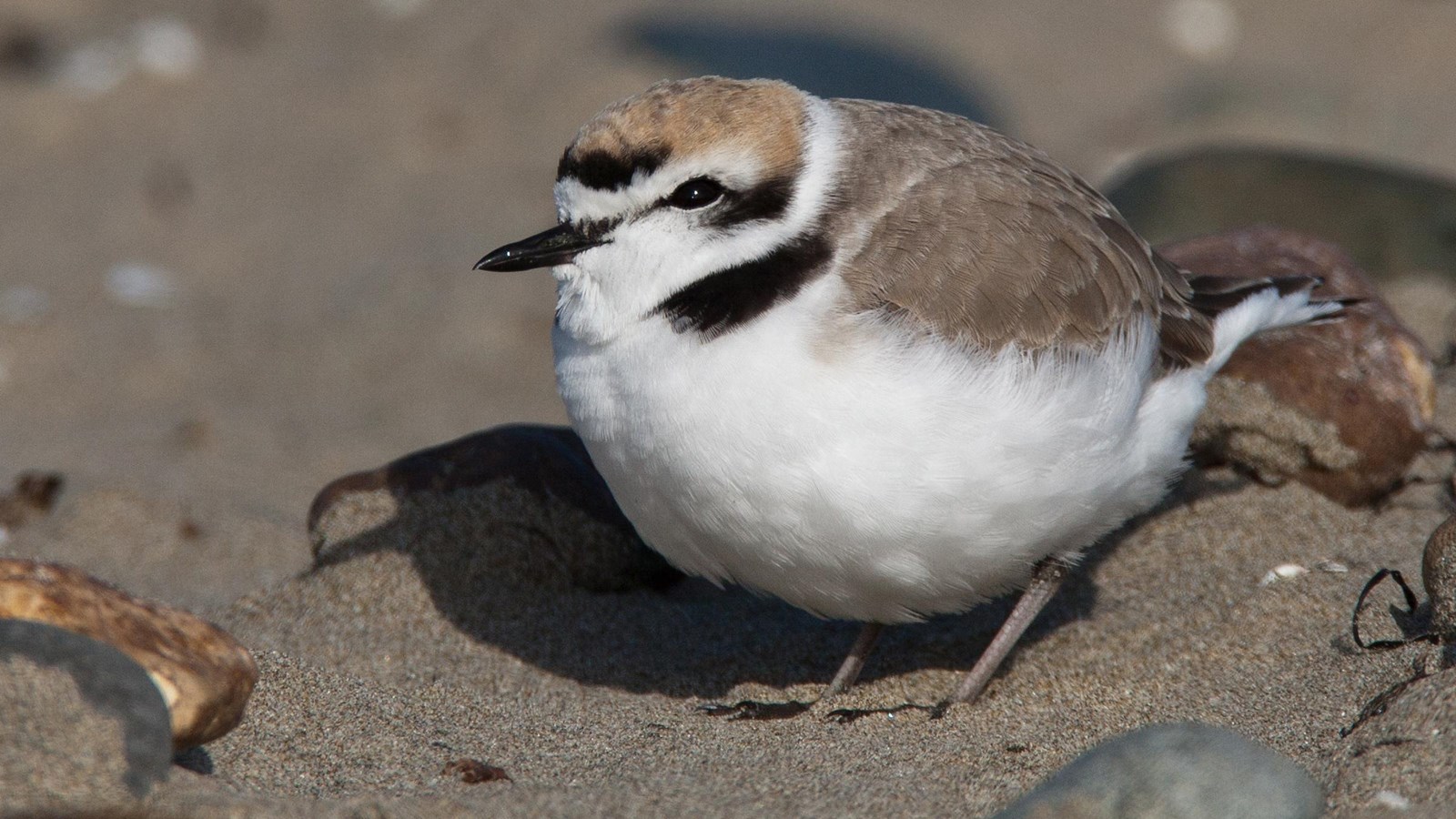Last updated: May 17, 2022
Place
Snowy Plover Habitat Arlington Canyon Area

Michael L. Baird
From March 1 to September 15, the back beaches and sand dunes in this area are closed to hiking to protect the nesting area for the western snowy plover, a federally listed, threatened shorebird. Please remain on the wet sand (below mean high tide) or the road throughout this area during this time.
Western Snowy Plover
Santa Rosa Island is one of the few locations in southern California that still supports breeding and wintering populations of western snowy plovers, a federally threatened shorebird species. Its extensive back dune area and sandy shoreline provide important nesting and foraging areas.
The Pacific coast population of western snowy plovers has declined due to many factors. Recreational and other human disturbance, loss of habitat to urban development, introduction of beachgrass and other nonnative species, and expanding predator populations have all contributed to a decline in active nesting areas and in the size of the breeding and wintering populations.
Within the park the population numbers have declined as well. On Santa Rosa Island it is estimated that less than 30 breeding pairs were on the island in 2002, down from 60 pairs in 1993. However, an estimated 200 birds still wintered on the island's beaches that same year. A recovery plan has also been implemented within its entire range that has helped the population increase by nearly 25 percent.
To avoid disturbance and help the western snowy plovers recover, several of the islands' back beaches and sand dunes are closed in this area to recreational use from March 15th to September 15th. Please remain on the wet sand (below mean high tide) or the road throughout this area during this time.
Western Snowy Plover
Santa Rosa Island is one of the few locations in southern California that still supports breeding and wintering populations of western snowy plovers, a federally threatened shorebird species. Its extensive back dune area and sandy shoreline provide important nesting and foraging areas.
The Pacific coast population of western snowy plovers has declined due to many factors. Recreational and other human disturbance, loss of habitat to urban development, introduction of beachgrass and other nonnative species, and expanding predator populations have all contributed to a decline in active nesting areas and in the size of the breeding and wintering populations.
Within the park the population numbers have declined as well. On Santa Rosa Island it is estimated that less than 30 breeding pairs were on the island in 2002, down from 60 pairs in 1993. However, an estimated 200 birds still wintered on the island's beaches that same year. A recovery plan has also been implemented within its entire range that has helped the population increase by nearly 25 percent.
To avoid disturbance and help the western snowy plovers recover, several of the islands' back beaches and sand dunes are closed in this area to recreational use from March 15th to September 15th. Please remain on the wet sand (below mean high tide) or the road throughout this area during this time.
